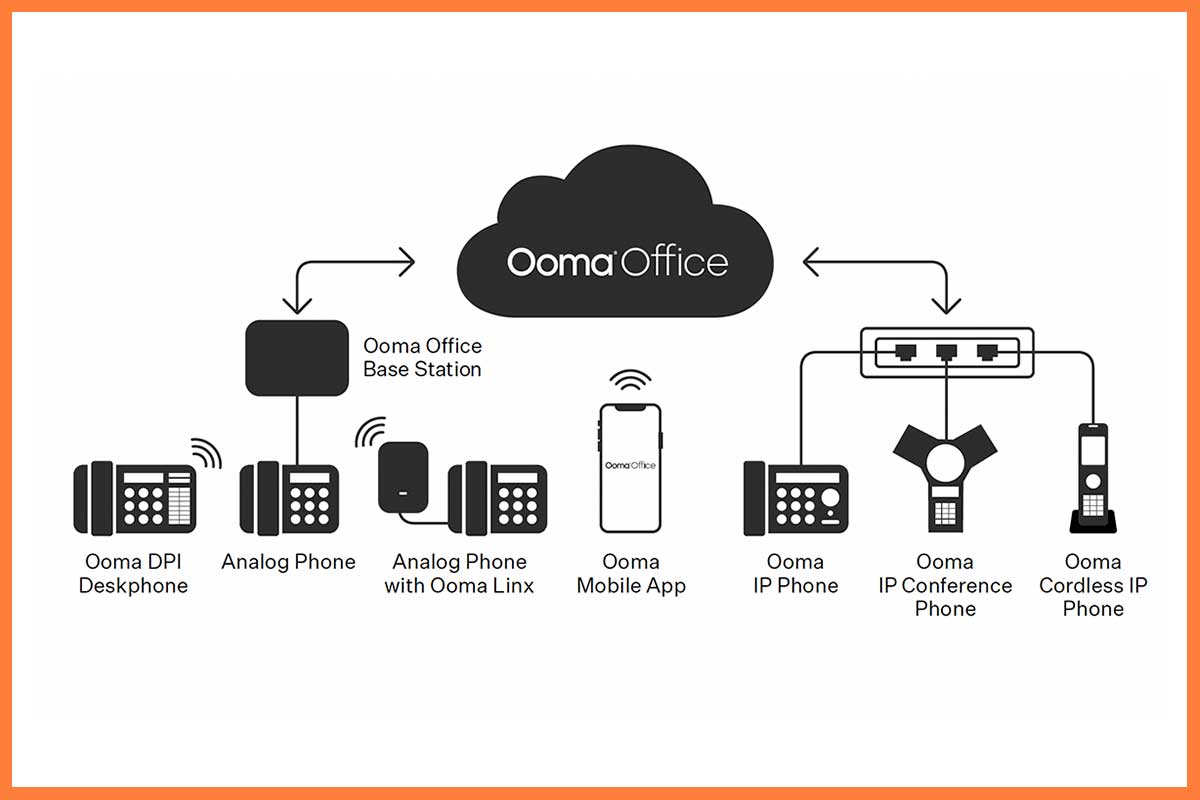Voice over Internet Protocol (VoIP) is the latest version of how to make a telephone connection that started when Alexander Graham Bell talked to Thomas Watson on March 10, 1876. This version transmits a call over the internet rather than the pervasive public telephone network built largely in the 20th century.
Beside a history lesson, why should anyone care whether or not they know what VoIP means when talking with family, friends and business associates? Well, Voice over Internet Protocol offers many benefits compared to the old way of connecting individuals. VoIP callers gain the features found in traditional phones as well as many new ones that often are not, such as virtual receptionist, call recording, blocking spam calls, Unified Communications, call recording and call parking.
Also, these systems deliver a great deal of flexibility. With traditional systems, the user was tied to the physical location of their phone. VoIP service offers mobility because you can take and make phone calls wherever you are.
Perhaps most importantly, VoIP calls typically cost much less than existing services. In many cases, customers gain the additional features while paying half as much as their traditional telephone services.
Because of the many benefits, VoIP has become a popular phone service option for businesses and consumers. Now that your interest is piqued, let’s take a closer look at VoIP and define what is VoIP, explain how it works and provide you with a guide to VoIP service decision-making.

Learn more about how Ooma Office can help your business.
Thank you!
An Ooma Office Sales Representative will be in touch shortly.
866-573-0707


Learn more about how Ooma Office can help your business.
Just call 877-621-0515 or click this to CHAT. Or, fill out this form and someone will reach out to you shortly.
Table of Contents
1.
How does VoIP work?

What is VoIP? VoIP is an acronym for Voice over Internet Protocol or Voice over IP. What does VoIP mean? The term differentiates a call placed over the internet from how most calls had been carried: via local telephone company connections through twisted copper wires. These two approaches provide similar capabilities to callers but differ in how they work.
The traditional telephone system is dubbed the Public Switched Telephone Network (PSTN). The way that it moves calls from originator to destination resembles how VoIP moves information, but the underlying equipment differs from the devices moving traffic on the internet, which creates a number of ripple effects.
Legacy telephones use analog, copper lines to carry voice signals. Callers rely on digital connections. Analog and digital signals transmit information via electric signals. Analog technology translates information into electric pulses of varying amplitude. In digital technology, information is formatted into binary (zeros or ones) bits where each bit represents one of two distinct amplitudes.
Typically, PSTN wires connect to a device known as a Private Branch Exchange (PBX). This equipment has been in use since telephony’s early days when switchboard operators had to manually plug in wires for calls to reach their destination. These systems typically relied on twisted pair wiring but have been enhanced so they work with modern Ethernet cables.
PBX design was proprietary, so a customer had to purchase all of its network equipment and phones from one vendor. The customer then became tied to the vendor for enhancements and features. These systems required a great deal of manual input to set up and maintain. Tasks as simple as assigning a phone extension to a new employee were cumbersome to complete. These limitations drove up system pricing and added to a corporate tech team’s system maintenance requirements.

2.
What is a VoIP call?
VoIP numbers rely on digital technology and IP (Internet Protocol), an essential building block of the internet, to move information from source to destination. They use the internet address assigned to your end device as a reference point to route calls to each VoIP telephone number.

Placing a VoIP call typically follows five steps:
- The phone connects to a switch or a router on the Local Area Network (LAN).
- The LAN moves information to an IP PBX, which recognizes the telephone number.
- The LAN uses a broadband (cable, DSL, or fiber) internet connection to transfer the caller from the LAN to the Wide Area Network telephone network.
- The telephone network recognizes where the destination is and establishes the internet connection.
- The caller and receiver converse.
VoIP is based on technology that has been in the development labs since the 1950s but did not start to make its way into the commercial mainstream until the 1990s when the internet took hold. These systems have a similar basic design to PSTN connections: the user has an input device, a piece of network equipment and an IP PBX that routes the call to the larger network. But the equipment differs in design and capabilities.
Initially, customers had to buy expensive, proprietary hardware to use VoIP, but that is no longer the case. Today, VoIP solutions often run on generic computers. They are built upon open standards, such as Session Initiation Protocol (SIP), which provides interoperability among different phones, conference phones and VoIP apps. The underlying system is open and standards based, so businesses can mix and match different suppliers’ equipment much more easily than in the PSTN.
VoIP carries voice conversation in small data packets. The calls originate on a LAN connecting callers to the network. Initially, these systems relied on local Ethernet cables to carry calls but, increasingly, the design allows individuals to connect wirelessly to the voice switch, usually through Wi-Fi.
They are then handed to a broadband internet connection, and then routed to its final destination anywhere in the world. High-speed internet access is available for 93.5% of all people in the United States, according to data provided by the Federal Communications Commission and Microsoft, so VoIP services reach just about everyone and every place. They do not take up much bandwidth and fit nicely with even slow internet links.
VoIP systems have modern designs and offer more flexibility than PSTN devices. The type of end device ranges from VoIP phones, smartphones and desktop devices, like PCs. VoIP solutions work on any computer because they’re built upon many years of open standards.
VoIP is well suited to the technology industry movement toward cloud solutions and away from companies maintaining computer infrastructure. Cloud IP PBXs are responsible for features, like voicemail, conferencing and call routing.
One consequence is a customer is not able to plug their PSTN phone into the internet or vice versa. A converter is needed to translate one format into the second. Gateways at different points provide interoperability between the PSTN and the internet, so a PSTN caller can communicate with a VoIP user. Typically, the local carrier installs and maintains the convertor equipment, but sometimes the customer takes on that work. In just about all cases, callers see no difference between calls that stay on the internet and those that are routed to the PSTN.
3.
Comparison of PSTN and VoIP
As in every choice, opting for VoIP presents a buyer with pros and cons to consider.

VoIP benefits
- Lower cost – Many consumers and businesses realize substantial cost savings and lower their phone bills by 50% or more.
- High-quality sound – Digital lines often provide noticeably better call quality than analog lines, which can become muffled or fuzzy on occasion.
- Advanced features – VoIP service providers typically offer premium features, such as auto attendants, call recording and call blocking.
- Remote-ready –- No technical setup is necessary even when you work from home or on the road. Access your phone service through desktop and mobile apps wherever you work.
- International calling – At one time, international long distance rates were very high. VoIP has rates as low as $0.01 per minute and has driven telecommunications service pricing down.
Downsides of VoIP
- Requires high-speed internet – VoIP doesn’t work well on dial-up or satellite-based internet connections. You’ll need at least 100 Kbps (0.1 Mbps) per phone line.
- Makes analog phones obsolete – VoIP uses new technology that doesn’t rely on analog signals. Typically, users need to upgrade their phone handsets or purchase adapters.
Calculate your savings
See how much you can save with Ooma VoIP phone systems by entering your current phone bill.
Go to Savings Calculator4.
Top VoIP phone system features
One benefit working with modern VoIP solutions is they support modern applications that include a wide range of productive features. Here are a few seen in most solutions.
Device flexibility
Chances are good that your organization has employees who span a wide range of ages and have specific phone preferences. You can let them use these telecommunications services with or without a separate desk phone. It’s your choice.
The established workers may feel comfortable working with a desktop or laptop computer. A convenient desktop app enables them to access and use their business phone system right from their computers. Millennials live and breathe with their smartphones. A mobile app allows on-the-go workers to use and manage business calls from their smartphones. The department administrator needs a full function VoIP phone. Now, you can let them work with whatever device they are most comfortable with. Providing that flexibility helps to ensure that no one misses a call, no matter where they work from or what device they use.
As a bonus, these systems do more than let employees make phone calls. They can join conference calls, exchange text messages and perform other intelligent services.
Virtual receptionist
No matter if you are a one person company or a thriving enterprise, a virtual receptionist enables you to project a professional image. Callers are greeted with a phone menu that helps them quickly find needed information. These systems often come with default options, but typically, the customer has the ability to set up routing of the calls in whatever manner they wish. Not only does the auto attendant direct callers to the right person or department, but it also provides the company with a record of the types of calls it receives, which helps you gauge the impact of efforts, like a new marketing program.
These systems are flexible. The virtual receptionist forwards calls to your voicemail or elsewhere outside of business hours. This redundancy is a perfect way to stay online during unplanned events, like a power outage. This solution routes messages and callers to their destination. You gain the flexibilityflexibiilty to set it up in multiple ways so you never miss another business opportunity.
Block spam calls
Tired of telemarketers ringing your phone and wasting your time? Well, you are not alone. Every month, spammers send about7 billion texts, trying to induce individuals to buy their products or click on their links, which sometimes are bogus. Call blocking prevents spammers from reaching your business, so you no longer waste any time on those unwanted solicitations.
Unified communications
Traditional face-to-face communication for businesses became challenging during the pandemic. VoIP is often the foundation for virtual team meeting solutions, known as Unified Communications (UC) solutions. These products support group meetings, seamless video interactions, chat and easy screen-sharing.
Rather than using several disparate apps, your company’s communications platform is fully integrated and offers compatible tools. The solution supports all popular mobile devices, including your favorite one. To join a conference, users do not need to input a long telephone number or obscure access codes. Instead, a few taps on your phone and you are ready to go.
Here are some of the key functions found within most UC platforms:
- Instant messaging
- Team chats
- Video meetings
- Screen-sharing
- Conference calls
- Mobile and desktop apps
Group messaging functions enable members to send important information via direct and team messages boards, where they are acted upon immediately or flagged for follow-up later. The conferences become the group’s record keepers: tracking conversations so all members understand decisions and workflow. When brainstorming is needed, whiteboards allow attendees to draw on any device, including their phones.
As a result, teams get work done faster and it’s easy for employees to connect with each other and customers. In essence, UC makes real-time communication possible, intuitive, well-organized and productive.
Call recording
What was said in that meeting with your customer last week? Call recording features easily create a record of your calls, so you can play them back for review later. Companies leverage your modern phone system to record phone calls between callers and your staff.
The solution can enhance contact center personnel interactions. By recording customer calls, managers determine if staff is handling them with care and precision and reveals areas for team members to improve.
Multi-device ring
Employees roam from place to place during the workday. Whenever urgent business arises, they want to be accessible to fellow employees and customers. VoIP multi-ring capabilities notify an employee’s office phone, mobile app and external devices when a call comes in. As a result, they connect with others more often and miss out on important information exchanges less.
Call forwarding
More and more, employees work on-the-go, traveling from the office to home, one office to another and the office to a customer site. They need their calls to follow them as they roam. Call forwarding removes the physical boundary typical with traditional phones, so the call reaches the person.
Call park
Call park takes the convenience of a call transfer and provides it with even greater flexibility. How so? Parking a call places an active caller on hold in a user-defined parking spot. Anyone on the team who knows the parking spot can retrieve the call and address the needs of the customer. This feature has several uses:
- Park a call and then retrieve the call from another extension.
- Locate and give a heads-up to the person who needs to pick up the call.
- Park a call and move to another location, one with information needed to service the request.
- Put an active call on hold, but not tie up a main line.
Call transfer requires a specific destination for a call; a parked call offers more flexibility and can be retrieved from any device by any user as long as they know the parking spot.
Call park results in fewer missed calls. Employees no longer transfer callers to a person who may or may not be available. Long wait times are among some of the biggest frustrations that customers have when calling into a company, so this feature minimizes that likelihood.
Ring groups
Ring groups are designed to enable callers to reach employees on a group of extensions rather than a single number. Many departments have a group of employees that could answer a call, like a customer support or accounting group, so a ring group is an effective way to make sure no call goes unanswered.
You can either assign users and all their associated devices or a users’ individual devices to a ring group. When a call comes in, it’ll ring the group in one of two ways. It can ring all the devices at the same time to let anyone pick it up as soon as possible, or ring the group sequentially, going user by user until someone answers.
Intercom calling
Many corporate offices operate over large areas. An intercom feature enables individuals to broadcast messages to the group. For example, you can remind employees about a company event.
5.
VoIP buying considerations
Switching to VoIP from PSTN solutions is a major decision for an organization. In addition to the rich feature set, here are a few items that you need to understand to ensure that you make the right choice for your organization.
The need for VoIP phones
With VoIP, traditional phone handsets won’t work as-is. If you want to use a desk phone, you’ll need a special adapter to retrofit your existing phones or buy replacement VoIP phones. To use an existing analog phone with VoIP, you’ll need an Analog Telephone Adapter (ATA). These are pretty straightforward in how they function. They retrofit these older devices to send digital data over the internet.
On the plus side, companies have plenty of other options. Employees can use their smartphones, laptops or desktop computers in cases where the service provider has mobile or desktop applications.
The good news is that VoIP phone prices have been dropping and aren’t expensive. Because of market competition, phone service providers sometimes bundle the cost of the phones in with the new system. Because VoIP is much less expensive than PSTN solutions, companies find the investment easy to justify.
Working from home

When the pandemic dramatically impacted corporate workplaces, businesses needed flexible network internet connections. With many workers telecommuting, they need a communication system supporting a variety of Local Area Network configurations.
VoIP fits the bill. Companies can outfit workers with desk VoIP phones, so employees are always able to connect with coworkers. Smartphone aficionados can download an app and hook up with their colleagues. Those employees who work with complex documents can turn their laptops and desktop computers into communication tools and make sure that they are in sync with their fellow employees.
VoIP reliability
Like many technologies, VoIP experienced challenges when it was a fledgling business. In the early days, the call quality was inconsistent. Sometimes calls dropped, and delays were common. As internet bandwidth increased, VoIP call quality improved dramatically. In many cases, VoIP calls sound crisper and clearer than a traditional phone.
Reaching emergency services
VoIP 911 calls may correctly connect to the 911 call center but not automatically transmit the caller’s phone number and/or location information. VoIP customers may need to provide location or other information to their VoIP providers and update this information each time they change locations for their emergency service to function properly. Individuals can enhance their safety by updating their E911 location where they perform their work. For example, if they work from home, they should use their home address.
6.
Find the right VoIP provider

Purchasing a new phone system adds credibility, flexibility and reliability to your business. However, because you aren’t a VoIP expert, you may need help selecting a VoIP phone service provider.
VoIP service is more than establishing calls; it is a business enabler with technology that helps your employees do their jobs. The right system streamlines business processes as employees connect to coworkers, customers and partners.
Here are a few tips to help with the evaluation process.
First, determine what your business objectives are and what role technology will play in meeting them. When choosing a phone plan for your company, you will need to think about your needs not only today, but also tomorrow and a few years out.
Some questions to consider include:
- What role will remote work play in your organization?
- Do you want to emphasize customer service? If so, contact center solutions are important to the business.
- What is your current call volume? How do you see it changing in the next year? Three years? Five years?
- How many employees or contractors are devoted to maintaining your communications system?
- Do you want to handle the system in house or hand it over to a third party?
- How much scalability do you need in the system?
- Which features are most important to your business? Why?
- How can you future-proof your office phone system selection?
From these questions, you should gain a clear picture of what type of Voice over Internet Protocol solution you need. Next, find a third-party partner who is willing and able to help you select the right system and then stay with you as your needs change through the years. On the plus side, VoIP suppliers have been working with third parties for many years, so they are experienced. You should have no problem finding a partner whose services mesh with your needs.
7.
Select the best VoIP phone service provider

Once you have an idea of your VoIP features and requirements, look for a service provider who fits your needs. The decision starts with finding someone who can easily explain the technology, VoIP calls and VoIP phone numbers. The IP PBX moves calls from your facility to the internet. They perform routing of outgoing and incoming calls through existing telephone networks. VoIP providers work with you to make the best technical solution: the equipment, management features and internet and telecommunications services. They deliver flexibility, so employees work with devices that fit the way that they work. VoIP services should be rich in functionality and offer amenities, like spam call blocking, that free up time for your employees.
The solution should fit your budget and still grow with your needs as your business expands.
Here are several qualities to look for in a VoIP phone service provider:
- Proven reliability with minimal downtime
- Compatible with your network
- Live support available 24/7
- Multiple, redundant data centers
- No-pressure sales experience
- Optional professional services
- Examples of clients in your industry
You need to dig a bit and find out how well the company has serviced their customers. Ask for customer references, talk to those individuals and probe about shortcomings as well as strong services that the vendor delivered. Also, take into consideration online customer reviews. The new system will not always work perfectly, so inquire about the availability of live help, examine the system documentation and determine how easy or difficult it is for employees to troubleshoot problems.
When you’re in discussion with a VoIP provider, ask about the available specials. You could be eligible for a free business VoIP phone or a hefty discount, depending on your commitment.
Increasingly, Voice over Internet Protocol is besting traditional telecommunication services. VoIP offers many useful features, is very efficient and usually costs less–in some cases more than 50% less–than traditional telecommunications services. The global VoIP (voice over internet protocol) services market is expected to grow from $104.2 billion in 2017 to $194.5 billion in 2024, a 9.4% Compound Annual Growth Rate (CAGR) according to Persistence Market Research. As you can see, VoIP calling has been rapidly moving from emerging to established technology. Consequently, you may want to see how it can help support your business goals.


